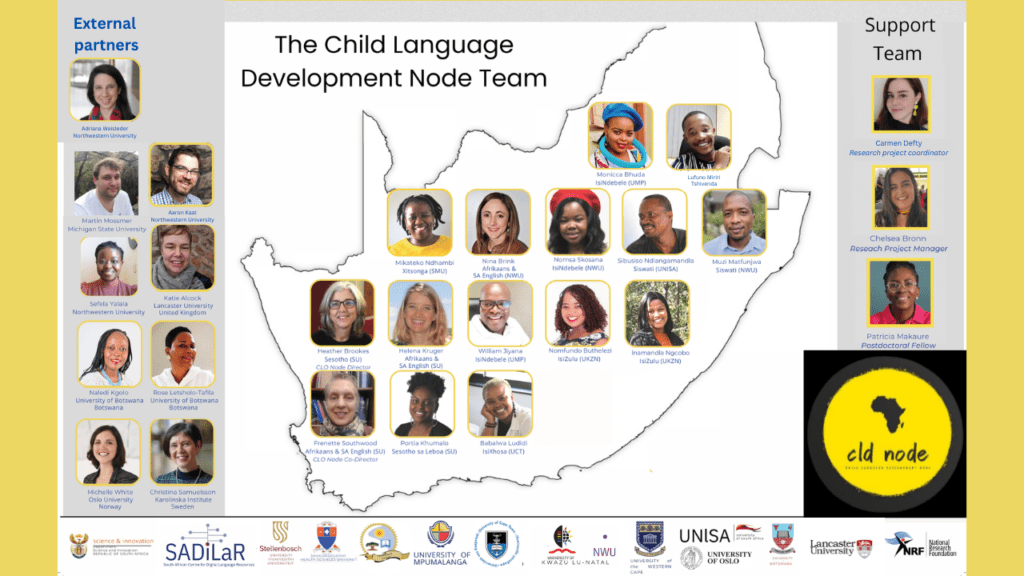14 October 2025

Hosted by Stellenbosch University and supported by the South African Centre for Digital Language Resources (SADiLaR), the Child Language Development Node (CLDN) is pioneering research into how children acquire language in South Africa’s richly multilingual and culturally diverse environment.
The main function of this node is to promote research on child language development in all South African languages and the digitisation of child language development data so that it is freely available on the SADiLaR platform for all scientists working on language, cognition, child health and development, language learning, and language disorders. This node works tirelessly to collect data on African languages to inform the development of valid diagnostic tools and interventions to promote language and cognitive development in South Africa’s children in health and educational settings.
At the heart of the node’s work lies its flagship initiative: the South African Communicative Development Inventories. These innovative parent–report tools are designed to track communicative development in children aged 8 to 30 months. What makes the initiative truly groundbreaking is its adaptation to and validation for all 11 official South African languages, positioning South Africa as the first country to systematically extend such developmental instruments across its full linguistic spectrum. The norming process aims to reach more than11 000 children nationwide, providing an unprecedented resource for language development research.
Beyond tool development, the CLDN is laying the foundation for a digital infrastructure of child language data, ensuring open access for researchers in linguistics, speech therapy, developmental psychology, and education. This infrastructure not only promotes collaboration but also empowers scholars and practitioners to apply data-driven insights in early diagnostics, intervention strategies, and educational policy design.
Recent research emerging from the node has shown that measuring the length of child utterances in languages such as isiXhosa, Sesotho, Setswana, and Xitsonga can serve as a powerful indicator of linguistic growth. These findings underscore the importance of recognising and studying children’s language development in their native linguistic contexts, rather than relying solely on Western models of assessment based on other languages.
Under the leadership of Professor Heather Brookes, the CLDN has become a hub for collaboration among universities, professional bodies, and public institutions all united in a shared vision to strengthen research capacity and promote equitable language development. By focusing on the early years of communication across all South African languages, the node is contributing to a more inclusive understanding of how children learn, express, and connect through language.
Through this pioneering work, the CLDN not only advances academic research but also upholds SADiLaR’s mission to support the digitisation, development, and accessibility of South Africa’s languages – ensuring that every child’s voice, in every language, can be heard, studied, and celebrated.
By: Thandeka Madonsela
